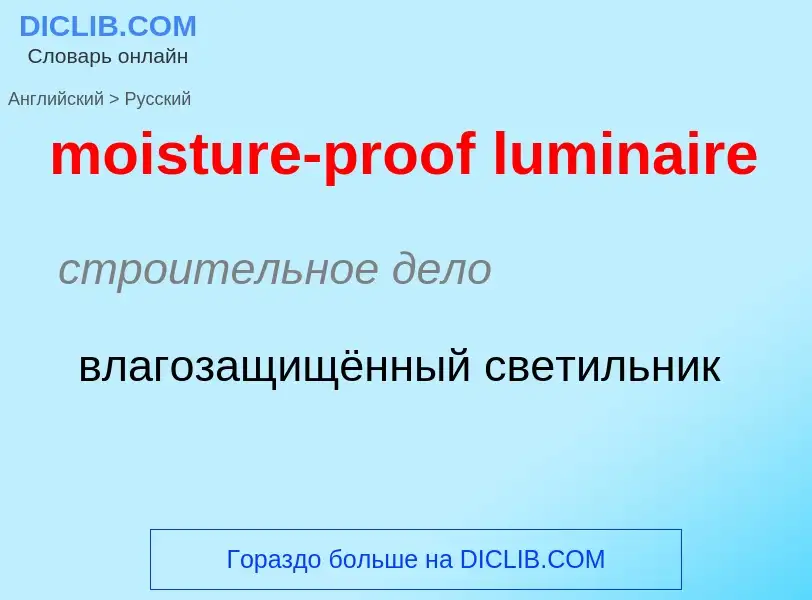Tradução e análise de palavras por inteligência artificial
Nesta página você pode obter uma análise detalhada de uma palavra ou frase, produzida usando a melhor tecnologia de inteligência artificial até o momento:
- como a palavra é usada
- frequência de uso
- é usado com mais frequência na fala oral ou escrita
- opções de tradução de palavras
- exemplos de uso (várias frases com tradução)
- etimologia
moisture-proof luminaire - tradução para russo
строительное дело
влагозащищённый светильник
математика
математическое доказательство
Definição
Wikipédia
Moisture sensitivity level (MSL) is a rating that shows a device's susceptibility to damage due to absorbed moisture when subjected to reflow soldering as defined in J-STD-020. It relates to the packaging and handling precautions for some semiconductors. The MSL is an electronic standard for the time period in which a moisture sensitive device can be exposed to ambient room conditions (30 °C/85%RH at Level 1; 30 °C/60%RH at all other levels).
Increasingly, semiconductors have been manufactured in smaller sizes. Components such as thin fine-pitch devices and ball grid arrays could be damaged during SMT reflow when moisture trapped inside the component expands.
The expansion of trapped moisture can result in internal separation (delamination) of the plastic from the die or lead-frame, wire bond damage, die damage, and internal cracks. Most of this damage is not visible on the component surface. In extreme cases, cracks will extend to the component surface. In the most severe cases, the component will bulge and pop. This is known as the "popcorn" effect. This occurs when part temperature rises rapidly to a high maximum during the soldering (assembly) process. This does not occur when part temperature rises slowly and to a low maximum during a baking (preheating) process.
Moisture sensitive devices are packaged in a moisture barrier antistatic bag with a desiccant and a moisture indicator card which is sealed.
Moisture sensitivity levels are specified in technical standard IPC/JEDEC Moisture/reflow Sensitivity Classification for Nonhermetic Surface-Mount Devices. The times indicate how long components can be outside of dry storage before they have to be baked to remove any absorbed moisture.
- MSL 6 – Mandatory bake before use
- MSL 5A – 24 hours
- MSL 5 – 48 hours
- MSL 4 – 72 hours
- MSL 3 – 168 hours
- MSL 2A – 4 weeks
- MSL 2 – 1 year
- MSL 1 – Unlimited floor life


![Visual proof for the (3,4,5) triangle as in the [[Zhoubi Suanjing]] 500–200 BCE. Visual proof for the (3,4,5) triangle as in the [[Zhoubi Suanjing]] 500–200 BCE.](https://commons.wikimedia.org/wiki/Special:FilePath/Chinese pythagoras.jpg?width=200)


